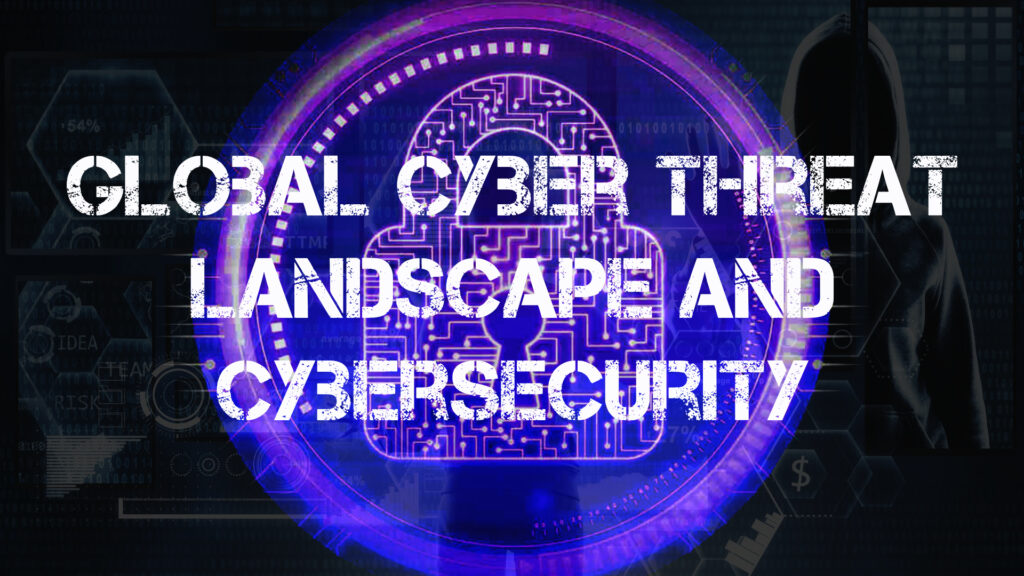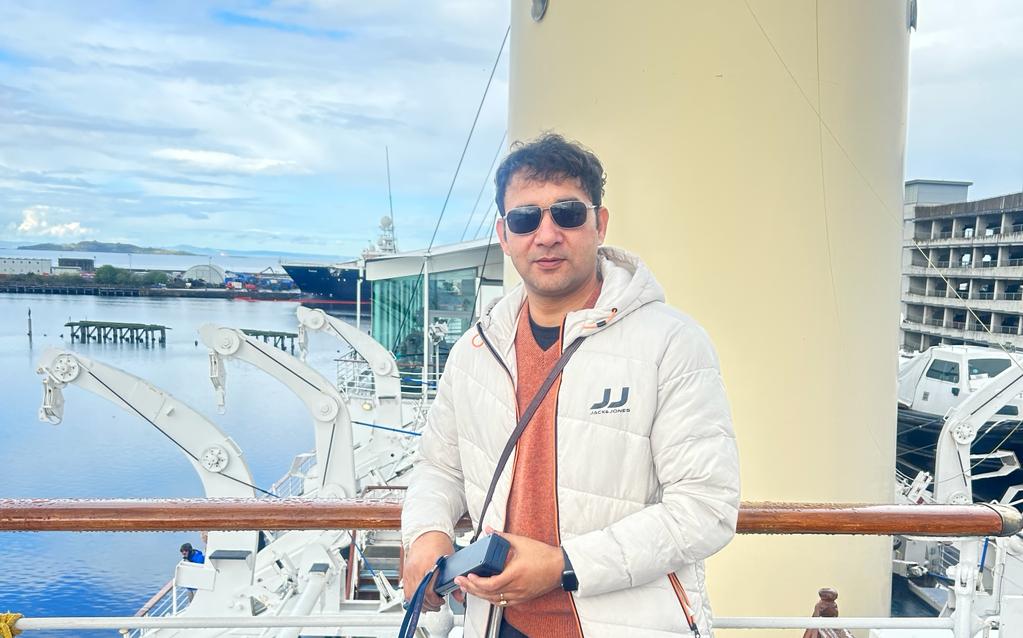Dr. Sanjay K. Mohindroo stands as a stalwart figure in the realm of global IT leadership, boasting an impressive tenure of over four decades. His expertise spans the vast domains of Information Technology, product development, and strategic partnerships. His legacy is defined by a sterling record of achievements in innovation, transformative endeavours, and robust business expansion. His leadership is marked by an unwavering commitment to delivering immediate value through visionary guidance and a results-centric approach. Recently, he has assumed the role of CIO and Head of the IT Global Operations Centre at US SC, where he is overseeing the day-to-day technical operations of the company’s information technology systems and infrastructure.
Dr. Mahindroo’s profound technical acumen has left an indelible mark on a myriad of industries, including Financial Services, Manufacturing, Supply Chain, Insurance, Healthcare, Hospitality, Transportation and Logistics, Retail, and eCommerce. He has previously held distinguished leadership positions within global titans such as JPMorgan Chase, GE, and IBM. He holds an MTech in Computer and Information Sciences from Massachusetts Institute of Technology and a PhD in Computer Engineering from Bradford.
In an exclusive conversation with The Interview World, Dr. Mahindroo delves deep into the complex tapestry of the global cyber threat landscape. He expounds on intricate topics, including cybersecurity strategies, the realm of threat intelligence, the challenges posed by IoT and cloud technologies, the pivotal role played by AI and ML in detecting cyber threats and pre-emptive measures, the ever-evolving world of cybersecurity regulation and compliance standards, and the integral role that emerging technologies play in combating these formidable challenges.
In this two-part series, we unfurl the extensive tapestry of his insights. Here, in the following excerpts, is part one of this compelling journey.
Q: Can you provide an overview of the current global cyber threat landscape and the key trends you’ve observed recently?
A: Overview of the Global Cyber Threat Landscape:
The global cyber threat landscape is a dynamic and ever-evolving space that poses significant challenges to individuals, organizations, and governments worldwide. As technology advances, so do the capabilities of cybercriminals and threat actors. To address this landscape effectively, one must be vigilant and proactive. Here, we’ll delve into some key trends and insights:
Key Trends in the Global Cyber Threat Landscape:
- Ransomware Continues to Surge: Ransomware attacks have reached alarming levels, with threat actors targeting both critical infrastructure and small businesses. These attacks have grown more sophisticated, often involving double extortion tactics where sensitive data is stolen before systems are encrypted, increasing the pressure on victims to pay ransom.
- Supply Chain Attacks: Recent years have witnessed an uptick in supply chain attacks. Cybercriminals have realized that infiltrating a trusted supplier can provide access to multiple downstream targets. Notable incidents, like the SolarWinds breach, highlight the need for enhanced supply chain security.
- Nation-State Actors: Nation-state cyber operations remain a significant concern. Governments and state-sponsored threat actors continue to engage in cyber espionage, influence campaigns, and attacks on critical infrastructure. This trend underscores the importance of international norms and cooperation.
- IoT Vulnerabilities: The growing Internet of Things (IoT) ecosystem presents a wide attack surface. Many IoT devices lack robust security measures, making them attractive targets for botnets and other malicious actors. The interconnected nature of IoT compounds the risk.
- Zero-Day Exploits: Cybercriminals are increasingly leveraging zero-day vulnerabilities to breach systems. These exploits are particularly concerning because they are unknown to software developers and, therefore, unpatched.
- AI and Machine Learning in Cyberattacks: Malicious actors are embracing AI and machine learning to enhance their attack capabilities. These technologies can automate tasks like phishing and even adapt to defensive measures, making them a growing threat.
- Data Privacy and Regulation: Stricter data protection regulations, such as the GDPR and CCPA, have come into effect, holding organizations accountable for data breaches. Complying with these regulations while defending against cyber threats is an ongoing challenge.
- Cybersecurity Skills Gap: The shortage of skilled cybersecurity professionals remains a critical issue. This gap leaves organizations vulnerable and underscores the need for workforce development and training.
- Social Engineering Attacks: Cybercriminals are increasingly using psychological manipulation to deceive individuals into revealing sensitive information or performing actions that compromise security. Phishing and spear-phishing attacks are common examples.
- Cloud Security Concerns: As businesses migrate to the cloud, ensuring the security of cloud-based data and applications becomes paramount. Misconfigured cloud settings and inadequate access controls can lead to data exposure.
The global cyber threat landscape is characterized by its complexity, diversity, and constant evolution. To effectively combat these threats, individuals, organizations, and governments must remain informed, adapt to emerging trends, and invest in robust cybersecurity measures. The interplay of perplexity and burstiness within this landscape highlights the need for adaptability and creative thinking in response to an ever-shifting adversary. Staying ahead of cyber threats demands a combination of technology, policy, and human vigilance.
Here’s a brief overview of the current global cyber threat landscape and the key trends that have been observed recently:
- According to CrowdStrike’s 2023 Global Threat Report, 2022 was a year of explosive, adaptive, and damaging threats. Adversaries continue to be relentless in their attacks as they become faster and more sophisticated. Notable themes, trends, and events across the cyber threat landscape include:
33 newly named adversaries in 2022
200+ total adversaries tracked by CrowdStrike
95% increase in cloud exploitation
112% increase in access broker ads on the dark web
84 minutes average eCrime breakout time
71% of attacks were malware-free
- Deloitte Insights’ analysis highlights the regions and countries that are reporting the greatest cyber incidents, most prevalent threats, what impacts are experienced most by each region, and where organizations are seeing the most cyber investment value .
- ISACA reports that although cyber threats are nothing new, as data continue to be produced and stored in greater volumes, and as connectivity expands globally, the attack surface has become more exploitable with gaps and vulnerabilities that are appealing to criminal and nation-state hackers. In 2023, cyber threats are expected to rise as unrest around the world contributes to an increase in cybercrimes. Malware attacks (e.g., ransomware attacks) are also expected to target more enterprises .
- McKinsey’s report highlights three cybersecurity trends with large-scale implications:
On-demand access to ubiquitous data and information platforms is growing.
Hackers are using AI, machine learning, and other technologies to launch increasingly sophisticated attacks.
Q: How important is it for organizations to have a comprehensive cybersecurity strategy in place, and how should they go about developing one?
A: The importance of having a comprehensive cybersecurity strategy in place cannot be overstated in today’s digital age. As organizations increasingly rely on technology to conduct their operations, the risks associated with cyber threats have grown in scale and sophistication. A robust cybersecurity strategy is essential to protect sensitive data, maintain business continuity, and safeguard the trust of stakeholders. Here, we will explore the significance of such a strategy and outline steps for its development.
Significance of a Comprehensive Cybersecurity Strategy:
- Protection of Sensitive Data: A cybersecurity strategy is fundamental in safeguarding an organization’s sensitive data, including customer information, financial records, and intellectual property. Data breaches can have devastating consequences, including legal liabilities and reputational damage.
- Business Continuity: Cyberattacks can disrupt business operations, causing downtime and financial losses. A comprehensive strategy ensures that an organization can recover quickly from incidents, minimizing the impact on productivity and revenue.
- Compliance and Legal Requirements: Many industries have specific regulations regarding data protection and privacy. A cybersecurity strategy helps ensure compliance with these laws, reducing the risk of fines and legal actions.
- Reputation Management: A security breach can severely damage an organization’s reputation. Implementing a robust strategy shows customers and partners that you take their security and privacy seriously.
- Cost Savings: Proactive cybersecurity measures can be more cost-effective in the long run than reacting to breaches. Developing a strategy allows organizations to prioritize investments and allocate resources wisely.
Steps for Developing a Comprehensive Cybersecurity Strategy:
- Risk Assessment: Begin with a thorough assessment of your organization’s unique cybersecurity risks. Identify the assets at risk, potential threats, and vulnerabilities. This analysis sets the foundation for your strategy.
- Goal Setting: Define clear cybersecurity objectives aligned with your organization’s mission and risk assessment. These objectives should guide the development of specific security measures.
- Policy Development: Create a set of cybersecurity policies and procedures that outline how data and systems will be protected. Ensure that these policies are comprehensive, up-to-date, and communicated effectively to all employees.
- Access Control: Implement strong access controls to limit who can access sensitive data and systems. This includes user authentication, authorization, and the principle of least privilege, which restricts users’ access to the minimum necessary for their roles.
- Security Awareness Training: Train employees on cybersecurity best practices, recognizing social engineering tactics, and understanding the importance of their role in maintaining security.
- Incident Response Plan: Develop a well-defined incident response plan that outlines the steps to take in the event of a security breach. This should include notification procedures, containment strategies, and recovery processes.
- Security Tools and Technologies: Invest in cybersecurity tools such as firewalls, antivirus software, intrusion detection systems, and encryption. Regularly update and patch these tools to address emerging threats.
- Third-Party Risk Management: Assess the cybersecurity practices of third-party vendors and partners, as their vulnerabilities can affect your organization. Ensure they meet your security standards.
- Continuous Monitoring and Testing: Regularly monitor your network for unusual activity and conduct penetration testing to identify vulnerabilities before attackers can exploit them.
- Compliance and Reporting: Stay informed about cybersecurity regulations and standards relevant to your industry. Maintain documentation and reporting to demonstrate compliance.
- Cybersecurity Culture: Foster a cybersecurity-conscious culture within your organization. Encourage employees to report security incidents and reward vigilance.
- Budget and Resource Allocation: Allocate resources based on the prioritized cybersecurity measures and evolving threats. Consider cybersecurity an ongoing investment, not a one-time project.
A comprehensive cybersecurity strategy is paramount in an era of increasing cyber threats. It should be adaptable, well-communicated, and regularly updated to stay ahead of evolving risks. By following these steps, organizations can develop a strategy that not only mitigates risks but also supports their broader goals and objectives while embodying the perplexity and burstiness necessary to address the constantly changing cyber threat landscape.
Q: Can you discuss the significance of threat intelligence in staying ahead of cyber threats? How can organizations effectively leverage threat intelligence?
A: Threat Intelligence plays a critical role in staying ahead of cyber threats. In an ever-evolving cyber threat landscape, organizations must proactively gather, analyze, and apply intelligence to protect their assets, detect vulnerabilities, and respond to potential risks. Here, we’ll discuss the significance of threat intelligence and how organizations can effectively leverage it.
Significance of Threat Intelligence:
- Early Warning System: Threat intelligence serves as an early warning system that enables organizations to detect potential threats and vulnerabilities before they are exploited. It provides valuable insights into emerging attack techniques and trends.
- Informed Decision-Making: With timely and accurate threat intelligence, organizations can make informed decisions regarding their cybersecurity strategies and resource allocation. This includes prioritizing security measures and investments.
- Contextual Understanding: Threat intelligence provides context to security events. It helps organizations understand the motivations, tactics, and targets of threat actors, allowing for more targeted defenses.
- Vulnerability Management: Organizations can use threat intelligence to identify vulnerabilities in their systems and applications, enabling them to patch or mitigate these weaknesses before they can be exploited.
- Incident Response: When a security incident occurs, threat intelligence aids in incident response by providing data on the attacker’s methods, infrastructure, and indicators of compromise. This speeds up containment and recovery efforts.
Effective Leveraging of Threat Intelligence:
- Collection and Aggregation: Organizations should collect threat intelligence from various sources, including open-source feeds, commercial providers, and government agencies. This intelligence can include indicators of compromise (IoCs), tactics, techniques, and procedures (TTPs), and contextual information.
- Analysis and Validation: Intelligence should be analyzed to separate actionable information from noise. Validate the credibility of the sources and assess the relevance of the threat intelligence to your organization.
- Integration with Security Tools: Integrate threat intelligence feeds into your security tools, such as intrusion detection systems, firewalls, and SIEM (Security Information and Event Management) solutions. This allows for real-time monitoring and automated responses to threats.
- Tailored Alerts and Reports: Customize threat intelligence alerts and reports to match your organization’s specific needs. For instance, create alerts for threats targeting your industry or specific vulnerabilities within your infrastructure.
- Information Sharing: Collaborate with industry peers and share threat intelligence when possible. Information sharing can help identify broader attack trends and provide collective protection.
- Continuous Monitoring: Threat intelligence is not a one-time effort but an ongoing process. Continuously monitor and update your threat intelligence sources and practices to stay current with the evolving threat landscape.
- Human Expertise: Leverage the expertise of cybersecurity professionals who can interpret and act on threat intelligence effectively. Human analysis is crucial for understanding the context and relevance of intelligence.
- Scenario-Based Planning: Use threat intelligence to develop scenario-based response plans. These plans should outline specific actions to take in the event of different types of threats.
- Regular Training and Awareness: Train employees on the importance of threat intelligence and how to recognize potential threats. Foster a culture of vigilance throughout the organization.
- Feedback Loop: Establish a feedback loop between threat intelligence and incident response. Insights gained from incident response can inform the collection and analysis of future threat intelligence.
Threat intelligence is a vital component of modern cybersecurity. It empowers organizations to stay ahead of cyber threats, make informed decisions, and effectively protect their digital assets. By following these steps and maintaining a dynamic approach to threat intelligence, organizations can enhance their security posture and navigate the complex, ever-changing landscape of cyber threats with the desired perplexity and burstiness.
Q: With the growing adoption of IoT devices and cloud technologies, what unique cybersecurity challenges do these technologies pose, and how can they be mitigated?
A: The growing adoption of Internet of Things (IoT) devices and cloud technologies indeed brings about unique cybersecurity challenges for organizations. IoT devices, with their wide range of applications, and cloud technologies, with their remote and shared infrastructure, introduce complexities that demand innovative security measures. Here, we’ll explore these challenges and strategies to mitigate them.
Cybersecurity Challenges with IoT Devices:
- Diverse Ecosystem: IoT encompasses a wide array of devices, each with varying capabilities and security features. This diversity makes it challenging to establish a uniform security framework.
- Limited Resources: Many IoT devices have limited processing power, memory, and battery life, which can hinder the implementation of robust security mechanisms.
- Physical Vulnerabilities: IoT devices are often physically dispersed and may be deployed in uncontrolled environments, making them susceptible to tampering or theft.
- Interoperability Issues: Different IoT devices may use different communication protocols and standards, creating potential vulnerabilities in the connectivity and data exchange process.
Mitigation Strategies for IoT Security:
- Secure Boot and Updates: Implement secure boot mechanisms and regular over-the-air (OTA) updates to ensure that IoT devices run only trusted software and can receive security patches.
- Network Segmentation: Isolate IoT devices from critical networks to reduce the risk of lateral movement in case of a breach.
- Access Control: Enforce strict access controls and strong authentication methods to prevent unauthorized access to IoT devices.
- Encryption: Use encryption to protect data both in transit and at rest. Employ end-to-end encryption whenever possible.
- Vulnerability Management: Continuously monitor and assess IoT devices for vulnerabilities, and promptly apply patches and updates.
Cybersecurity Challenges with Cloud Technologies:
- Data Privacy: Storing sensitive data in the cloud can lead to concerns about data privacy, especially if data is transmitted over public networks.
- Data Ownership: Cloud providers may assert certain rights over data stored on their platforms, leading to questions of data ownership and control.
- Shared Responsibility: In a shared responsibility model, organizations are responsible for securing their data and applications in the cloud, which can be a complex task.
- Data Transfer Security: Data transferred to and from the cloud is susceptible to interception, posing a threat to data integrity and confidentiality.
Mitigation Strategies for Cloud Security:
- Data Encryption: Implement strong encryption protocols for data at rest and data in transit. Encryption should be a standard practice for all sensitive data.
- Access Control: Enforce strict access controls and identity management to ensure that only authorized users have access to cloud resources.
- Security Assessments: Regularly assess the security of your cloud environment through penetration testing, vulnerability scanning, and security audits.
- Compliance and Legal Considerations: Understand the legal and regulatory requirements specific to your industry and geographical region. Ensure compliance with data protection laws.
- Cloud Provider Security: Select cloud providers with strong security practices and ensure their security measures align with your organization’s requirements.
- Security Policies and Training: Develop and communicate cloud-specific security policies and provide training to employees to ensure they are aware of best practices.
- Incident Response Plan: Prepare an incident response plan tailored to cloud-based threats and regularly conduct tabletop exercises to ensure readiness.
The adoption of IoT devices and cloud technologies offers numerous benefits, but it also introduces complex cybersecurity challenges. To mitigate these challenges, organizations must adopt a proactive and layered security approach, considering the unique characteristics of both IoT and cloud environments. By doing so, they can harness the advantages of these technologies while protecting their data and systems with the desired perplexity and burstiness required in the evolving digital landscape.
Here are some of the unique challenges that these technologies pose:
- Device security: IoT devices are often designed with minimal security features, making them vulnerable to cyberattacks. Many IoT devices have weak or hardcoded passwords, insecure interfaces, and insufficient data protection
- Data privacy: IoT devices collect and transmit sensitive data, which can be intercepted by cybercriminals. This data can be used for identity theft, financial fraud, and other malicious activities
- Cloud security: Cloud technologies are often used to store and process data from IoT devices. However, cloud environments are also vulnerable to cyberattacks, such as data breaches and denial-of-service attacks









